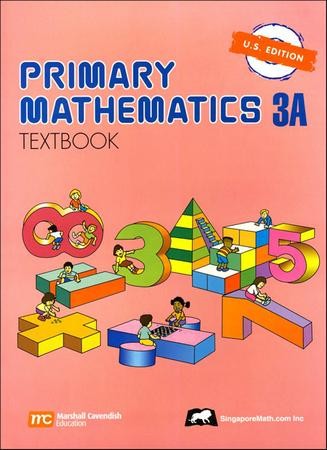Unveiling the most effective Faster Ways for Resolving Mathematics Problems Swiftly
In the domain of mathematics, efficiency is crucial. Understanding faster ways can change the way individuals come close to problems. From leveraging the distributive property to utilizing quick reproduction strategies, these techniques boost both rate and accuracy. Furthermore, acknowledging patterns streamlines complex computations. As one explores these methods, they may uncover unusual understandings that can change their mathematical experience. What are the most effective methods that can be easily integrated into everyday technique?
Grasping Psychological Math Techniques
How can one improve their estimation rate without relying upon calculators? Grasping psychological mathematics techniques supplies a sensible option. By using approaches such as damaging numbers right into smaller sized, convenient components, individuals can streamline complicated calculations. As an example, when adding two-digit numbers, rounding each number to the local 10 can make psychological addition much easier prior to adjusting back to the original worths.
Another efficient approach is to practice multiplication tables thoroughly, making it possible for quick recall of items (struggles in primary math). Furthermore, acknowledging patterns in numbers can assist in much faster computations, such as making use of the homes of even and odd numbers. Regular method via problems and video games can additionally refine these abilities, making psychological mathematics extra user-friendly
Inevitably, cultivating confidence in one's math capacities allows for quicker decision-making and improves overall mathematical efficiency. By including these techniques, anyone can substantially boost their estimation speed.
Using the Distributive Residential Property
The Distributive Residential property is a basic principle in maths that simplifies calculations by permitting multiplication across enhancement or subtraction. It is important for pupils to comprehend its application through practical examples, which can boost their analytic skills. In addition, identifying usual errors can further solidify their understanding and protect against mistakes in future estimations.
Recognizing the Distributive Residential Property
Grasping the distributive property can substantially streamline mathematical estimations. This essential building states that when increasing a single term by a sum or difference, one can distribute the multiplication throughout each term within the parentheses. For instance, in the expression a(b + c), one can revise it as abdominal + ac. This strategy not only enhances calculations but additionally improves understanding of exactly how numbers communicate (struggles in primary math). The distributive residential or commercial property is specifically useful in algebra, where it aids in streamlining expressions and solving formulas. Additionally, it prepares for more complicated principles, such as factoring and polynomial procedures. By understanding the distributive home, students can develop a solid structure for taking on a broad range of mathematical difficulties effectively
Practical Examples Illustrated
Why is it essential to use the distributive building in useful situations? The distributive residential or commercial property enables individuals to streamline complicated estimations, making problem-solving extra effective. For instance, when calculating the complete expense of several products, one can utilize the expression 5(2 + 3) to find the total expense of 5 items valued at $2 and $3. By distributing, the calculation becomes 5 × 2 + 5 × 3, yielding a quicker result of $25. One more example remains in algebra, where streamlining expressions like 3(x + 4) can be accomplished through circulation, resulting in 3x + 12. Such applications show the effectiveness of this building in various real-world scenarios, enhancing both speed and precision in mathematical analytic.
Common Errors to Avoid
Although the distributive building is a powerful tool in maths, typical errors can cause wrong outcomes. One frequent error occurs when trainees fail to remember to disperse the coefficient to every term within parentheses. In the expression 3(x + 4), stopping working to use the home properly can lead to omitting the multiplication, producing an inaccurate solution. An additional mistake includes misapplying the residential property by adding instead of increasing, particularly when adverse signs are involved. Furthermore, pupils might forget to streamline the last outcome, which can obscure errors made throughout circulation. Recognizing and preventing these mistakes can improve analytical performance and precision when making use of the distributive residential property in different mathematical contexts.
Quick Multiplication Shortcuts
In the domain of fast multiplication faster ways, techniques like increasing by powers of 10 and the doubling and halving approach stick out. These approaches can considerably simplify calculations, making them extra accessible. Understanding these faster ways can improve performance in mathematical problem-solving.
Multiplying by Powers of 10
When multiplying by powers of 10, the procedure ends up being extremely simple, as the operation mostly includes moving the decimal point. For instance, multiplying a number by 10 requires relocating the decimal one location to the right, while multiplying by 100 requires a change of two places. This simplicity includes bigger powers, where each additional no suggests another decimal change. As an example, multiplying 5.6 by 1,000 cause 5,600. This method greatly boosts speed and precision, as people can quickly envision the result without complicated estimations. Such performance is especially useful in psychological math or when time is limited, enabling quick analytical in different mathematical contexts. Understanding this method is crucial for any individual aiming to improve their arithmetic skills.
Doubling and Cutting In Half Approach
The Increasing and Cutting in half Method gives an efficient strategy for fast multiplication, specifically when handling also numbers. This technique involves changing a reproduction trouble right into a simpler kind by either doubling one of the numbers and halving the other. For instance, to calculate 16 × 25, one can cut in half 16 to get 8 and dual 25 to obtain 50, causing 8 × 50, which equals 400. This method simplifies calculations, making them more manageable. It is specifically beneficial in psychological mathematics, permitting people to resolve problems promptly and precisely. By leveraging this technique, pupils and professionals can improve their mathematical agility, therefore enhancing total efficiency in mathematical jobs

Efficient Department Techniques
Although division often postures challenges for lots of students, utilizing effective methods can significantly simplify the process. One effective technique is the use of compatible numbers, which entails rounding the original site divisor and returns to simpler worths that are close to the initial numbers. This technique makes mental estimations a lot more convenient. Another strategy is the evaluation technique, where students can find a harsh solution prior to executing the exact division, providing a helpful standard for precision.
Moreover, the long division method continues to be a staple for dividing bigger numbers. By breaking the procedure into smaller sized, much more absorbable steps, students can keep quality. The duplicated subtraction method can additionally be handy, especially for those that struggle with even more abstract principles. By methodically subtracting the divisor from the dividend, individuals can picture the procedure. Generally, these techniques can improve department abilities, leading to quicker and more precise analytical abilities.
Rapid Enhancement and Subtraction Techniques
How can learners boost their speed and precision in enhancement and reduction? One efficient approach is to utilize mental math techniques, such as breaking numbers into smaller sized, much more workable parts. When adding 47 and 36, one can initially include 40 and 30 to obtain 70, after that include the continuing to be 7 and 6 to show up at 83. This method streamlines computations and minimizes mistakes.
Another technique includes making use of the number line for visual learners, helping them to see the partnerships between numbers and boost their comprehension. In addition, experimenting tools like flashcards can enhance quick recall of fundamental sums and differences.
Additionally, students can profit from acquainting themselves with benchmark numbers, such as rounding to the nearby 10, which permits quicker estimates. By incorporating these methods into their technique, learners can considerably improve their speed and accuracy in standard math operations.
Leveraging Estimation for Quick Calculations
Estimation functions as an effective device for improving computation rate, enhancing mental mathematics methods efficiently. By rounding numbers to their nearby whole values, individuals can simplify complicated estimations, making it much easier to reach an approximate outcome quickly. When faced with an important link issue like 198 + 267, rounding to 200 + 270 yields a fast quote of 470, permitting the solver to examine the accuracy of the final response.
Furthermore, estimation is especially valuable in situations entailing multiplication and division. By rounding factors to simpler numbers, one can quickly determine approximate items or ratios. This method not only saves time yet additionally assists in determining potential errors in calculations.
Acknowledging Patterns and Formulas
Patterns and formulas are necessary tools in maths that enable individuals to address issues a lot more efficiently. Identifying these patterns allows students to determine relationships between ideas and numbers, which can simplify intricate calculations. Identifying the square formula (ax ^ 2 + bx + c = 0) promotes fast services to various formulas.
Patterns in sequences, such as arithmetic or geometric developments, aid people forecast future terms without considerable estimations. Solutions, on the various other hand, offer as shortcuts, enabling faster problem-solving by encapsulating complicated connections right into workable expressions.
Frequently Asked Questions
How Can I Boost My Focus While Fixing Mathematics Problems Promptly?
To improve emphasis while solving imp source mathematics issues promptly, one can remove interruptions, established particular objectives, technique mindfulness strategies, take normal breaks, and keep a consistent research regimen to improve focus and mental quality.
What Devices or Apps Assist with Quick Mathematics Problem-Solving?
Various tools and applications, such as Photomath, Microsoft Math Solver, and Desmos, enhance quick mathematics problem-solving. These resources provide detailed solutions, graphing capabilities, and instant comments, making them valuable for specialists and trainees alike.
Are There Details Mathematics Shortcuts for Standardized Examinations?
Yes, details mathematics faster ways for standard tests consist of techniques like evaluation, understanding number residential or commercial properties, making use of the procedure of elimination, and mastering common solutions. These methods boost rate and accuracy, improving general test efficiency.

How Do I Practice Math Shortcuts Successfully?
To exercise mathematics faster ways properly, individuals must consistently fix diverse troubles, utilize on the internet resources, and take part in timed drills. Consistency and representation on mistakes boost understanding, inevitably bring about improved speed and accuracy in computations.
Can Shortcuts Be Applied to Intricate Math Problems?
Shortcuts can indeed be applied to complicated math issues, although their effectiveness differs. Mastery of foundational principles and critical reasoning makes it possible for people to streamline processes, making it less complicated to deal with detailed calculations successfully.
By employing approaches such as breaking numbers right into smaller sized, convenient parts, people can streamline complicated computations. Furthermore, recognizing patterns in numbers can help with quicker estimations, such as using the buildings of also and weird numbers. Estimate offers as a powerful device for boosting computation rate, complementing psychological math strategies effectively. By rounding numbers to their nearby whole values, people can simplify complicated calculations, making it less complicated to show up at an approximate result quickly. Identifying these patterns allows learners to identify partnerships between principles and numbers, which can streamline intricate calculations.